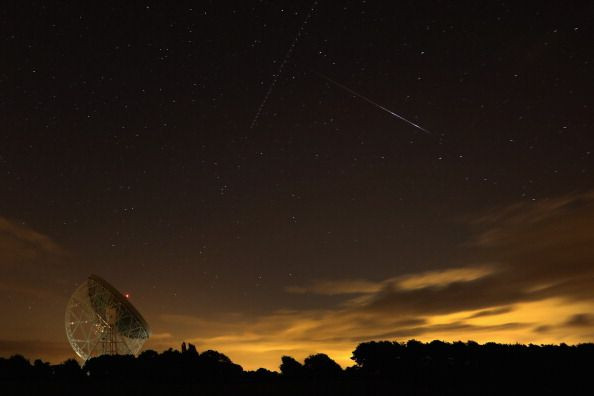Scientists Detect Alien Signal From Distant Constellation Sagittarius

A strange "alien" signal detected in 1979 still baffles scientists today.
Ohio State University’s Big Ear radio telescope picked up the strange signal that stunned astronomers for its duration and origin. As the signal came from the distant constellation of Sagittarius, its occurrence sparked claims that it could be a sign from aliens.
According to Dr. Jerry Ehman, who was among the scienists who detected the entire signal sequence, the signal was a "loud noise" that lasted for 72 seconds with a frequency of around 1,420 megahertz. The scientists did not observe anything out of the ordinary until several days later when they reviewed the data. The signal shocked Ehman greatly that he encircled the reading on the computer printout and wrote: "Wow!" This also gave birth to the "Wow! signal.”
That was 1979. Ehman and his colleagues failed to provide a reasonable explanation for the occurrence, which remains true until today. Professor Brian Cox said that should an alien civilization wish to communicate with Earth, this might be the way they would do it. Up to today, the signal is considered as the "strongest candidate for alien radio transmission to Earth."
Since it was detected, several theories cropped up to try and explain it. For example, astronomer Antonio Paris said that the signal could have come from hydrogen cloud surrounding comets 266P/Christensen and 335P/Gibbs. Ehman, on the other hand, does not believe that this could be the explanation. According to him, the two-comets theory presents two big issues: the signal only happened once and it happened for a short period. Ehman did look at the study of Paris with Robert Dixon, who directs the radio observatory at The Ohio State University.
According to Ehman, the source should have come through twice within three minutes. The first response should have lasted 72 seconds, same as the second one following within about a minute and a half. There wasn't a second one. He also said that the Big Ear featured two "feed horns," which offered a slightly different field of view for the radio telescope. Additionally, comets cannot produce such signal since gases around them cover large, diffuse areas.
Despite uncertainties on signals picked up from across space, scientists continue to look for signs of alien life. For instance, NASA's TESS mission hopes to find exoplanets. The effort has already led to the discovery of “hot Saturn” planet TOI 197.01. Lead author Lisa Kaltenegger, a professor of astronomy in the College of Arts and Sciences and director of Cornell’s Carl Sagan Institute, said that life might exist in different types of worlds, but what we know is that there is a world like ours who can support life. Thus, it makes sense to search for Earth-like planets.
© Copyright IBTimes 2024. All rights reserved.





















